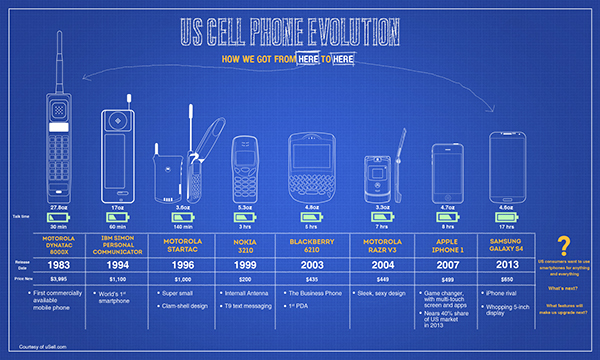

The Evolution of Mobile Technology: From Brick Phones to AI-Powered Devices
The mobile technology landscape has undergone a significant transformation since the first mobile phone was introduced in the 1970s. From bulky devices with limited capabilities to sleek, high-performance smartphones that can do almost anything, the journey of mobile technology has been nothing short of remarkable. In this article, we will take a closer look at the evolution of mobile technology, highlighting the key milestones, innovations, and trends that have shaped the industry into what it is today.
The Early Days (1970s-1980s)
The first mobile phone, the Motorola DynaTAC 8000X, was launched in 1973. It was a bulky device, weighing around 2 pounds, with a talk time of just 30 minutes and a standby time of up to 8 hours. The phone was nicknamed the "brick phone" due to its rectangular shape and weight. Despite its limitations, the Motorola DynaTAC 8000X marked the beginning of a new era in mobile communication.
In the 1980s, mobile phones became slightly more compact and feature-rich. The Motorola MicroTAC 9800X, released in 1989, was the first mobile phone to feature a flip design, making it more portable and user-friendly. The phone also had a built-in antenna, which improved reception and reduced the risk of dropped calls.
The Rise of Digital Technology (1990s-2000s)
The 1990s saw a significant shift in mobile technology, with the introduction of digital technology. The first digital mobile phone, the IBM Simon, was launched in 1993. It featured a touchscreen display, email, fax, and phone capabilities, as well as a calendar and address book. The IBM Simon was a bulky device, but it marked the beginning of a new era in mobile technology.
In the early 2000s, mobile phones became more affordable and widely available. The Nokia 3310, released in 2000, was a highly popular device that sold over 126 million units worldwide. It was known for its durability, long battery life, and addictive games like Snake II.
The Smartphone Revolution (2007-2010)
The launch of the Apple iPhone in 2007 marked a significant turning point in the evolution of mobile technology. The iPhone was the first mobile phone to popularize the use of multi-touch gestures, apps, and a mobile operating system. It was a game-changer in the industry, forcing other manufacturers to rethink their strategies and compete with Apple’s innovative approach.
In 2008, the first Android smartphone, the T-Mobile G1, was launched. Android, an open-source operating system, offered a more customizable and flexible alternative to Apple’s iOS. The Android platform rapidly gained popularity, and by 2010, it had become a major player in the smartphone market.
The Era of High-Performance Smartphones (2010-2015)
The 2010s saw a significant improvement in smartphone performance, display quality, and camera capabilities. The Samsung Galaxy S, released in 2010, was one of the first Android smartphones to feature a large, high-resolution display and a powerful processor. The iPhone 4, launched in 2010, introduced a new design language, with a stainless steel frame and a higher-resolution display.
In 2011, the first dual-core smartphones were released, offering faster processing speeds and improved multitasking capabilities. The Samsung Galaxy S II, launched in 2011, was one of the first smartphones to feature a dual-core processor, which set a new standard for performance and efficiency.
The Rise of AI-Powered Smartphones (2015-Present)
In recent years, mobile technology has witnessed a significant shift towards artificial intelligence (AI) and machine learning (ML). The launch of the Apple iPhone X in 2017 marked a new era in AI-powered smartphones, with the introduction of Face ID, a facial recognition system that uses AI to unlock the phone.
In 2018, the Huawei Mate 10 Pro was launched, featuring a dedicated AI processor, the Kirin 970. The phone was capable of performing AI-powered tasks, such as image recognition, language translation, and predictive maintenance.
Today, AI-powered smartphones are the norm, with most flagship devices featuring AI-driven cameras, processors, and software applications. The Google Pixel series, Samsung Galaxy series, and OnePlus devices are just a few examples of smartphones that harness the power of AI and ML to enhance user experience.
Key Innovations and Trends
Throughout the evolution of mobile technology, several key innovations and trends have shaped the industry:
- Touchscreen Displays: The introduction of touchscreen displays has revolutionized the way we interact with mobile devices.
- Apps and App Stores: The launch of app stores, such as Apple App Store and Google Play, has enabled users to download and install a wide range of applications, from social media to productivity tools.
- 4G and 5G Networks: The introduction of 4G and 5G networks has enabled faster data speeds, lower latency, and widespread adoption of mobile broadband.
- Camera Improvements: Advances in camera technology have enabled high-quality photography, video recording, and features like optical zoom, portrait mode, and augmented reality.
- Wireless Charging: Wireless charging has become a popular feature in many smartphones, offering a convenient and easy way to charge devices.
- Fingerprint Recognition: Fingerprint recognition has become a standard feature in many smartphones, providing an added layer of security and convenience.
Conclusion
The evolution of mobile technology has been a remarkable journey, marked by significant innovations, trends, and milestones. From bulky brick phones to sleek, AI-powered devices, mobile technology has come a long way. As we look to the future, it is clear that mobile technology will continue to play a vital role in shaping our lives, with advancements in AI, 5G, and IoT (Internet of Things) set to revolutionize the industry further.
As we celebrate the achievements of the past, we must also acknowledge the challenges that lie ahead. The increasing reliance on mobile technology raises concerns about data privacy, security, and the environmental impact of device production and disposal.
As the mobile technology landscape continues to evolve, it is essential that manufacturers, policymakers, and consumers work together to address these challenges and ensure that mobile technology is used responsibly and sustainably.




